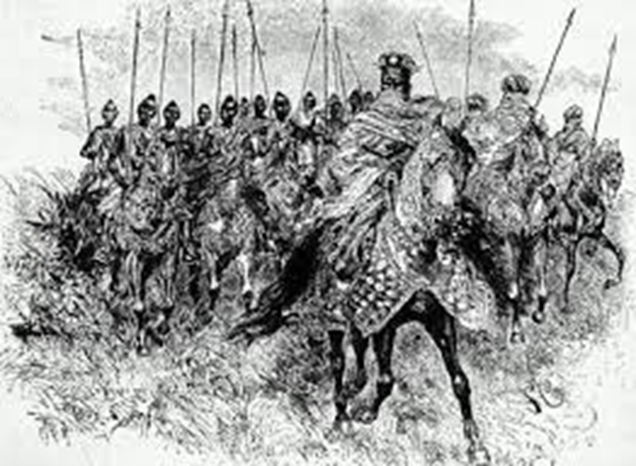Alaafin Ajiun Orompoto: the only female ruler of the Oyo Empire
By Michelle Mojisola Savage
Alaafin Ajiun Orompotoniyun, also known as Orompoto, was the only female Alaafin of Oyo. She ruled the empire in the 16th century, in an era of continuous warfare, when Oyo fought her neighbors to acquire control of lucrative trade routes. As a skilled equestrian forged a formidable cavalry to protect the empire.
Ascension to the throne: after the death of her father, Alaafin Ofiran, her brother, Prince Eguguojo, succeeded him. But he died young without a male heir. Since her younger brothers, Princes Ajiboyede and Tella, were too young to rule the kingdom, the Oyo Mesi connived to crown a king from among themselves or another ruling house. Tradition forbade a female Alaafin. To retain the regal seat in her family, Orompoto insisted on being Alaafin. Seeing that her gender was her only obstacle to the throne, she asked for seven days to prove her masculinity. According to oral Yoruba history, she appeared on the seventh day with a bald head, flat chest, and male organs. She became Alaafin immediately.
A transgender Alaafin? History should be taken with a grain of salt. Did Orompoto become a man in seven days? That would be impossible because there were no gender-reassignment surgeries in 1554 when she ascended the throne. Traditional medicine was potent, but even the best herbalists could not have managed such a surgery.
Could she have convinced the Oyo Mesi to make her Alaafin in seven days? Quite unlikely. Backed by the powerful Ogboni cult, the Oyo Mesi was a very powerful council whose actions and decisions rivalled even those of the Alaafin. Yet she ascended the throne. There is another plausible theory. Orompoto and her supporters found a man who bore a strong resemblance to her and stood him before the Oyo Mesi in her stead. Perhaps, his discovery fuelled her decision to fight for the throne. No one knows.
Wars, cavalry, and battle strategies: as the ruler of a powerful political empire that controlled territories as far as the Fon Kingdom of Dahomey, the early years of her reign were fraught with wars. Orompoto introduced cavalry to the Oyo military, a feat believed to be why Oyo became the largest empire in Yoruba history. In 1557, she reportedly went as far as Timbuktu to import horses for her specialized cavalry. She may also have employed a thousand Borgu archers to shoot poisoned arrows from horseback. The cavalry was subject to the Eso Ikoyi. According to legend, she kept her foot soldiers in front and cavalry behind in battles. Riders tied large leaves to the horses’ tails which swept the ground to cover their tracks.
In 1555, a few years after her father reclaimed some of Oyo’s original territories from the Nupes, they retaliated. With her formidable cavalry, she defeated the Nupes. Her renowned cavalry and military strategy distinguished her in subsequent battles, making her one of the most influential Alaafin of the Oyo empire.
Orompoto died in the Battle of Ilayi in 1562; after securing victory for Oyo. She was buried in Igbo-oba, where the remains of three other Alaafins also rest. The burial site is in Igboho, Orelope Local Government Area of Oyo State. Her younger brother, Prince Ajiboyede, succeeded her.
Image credit
CuChullaine O’Reilly FRGS.

Michelle Mojisola Savage
is a writer and Engineering
student at the University of
Lagos. Her interests include
playing the guitar, strong
political arguments and
talking to dogs.





